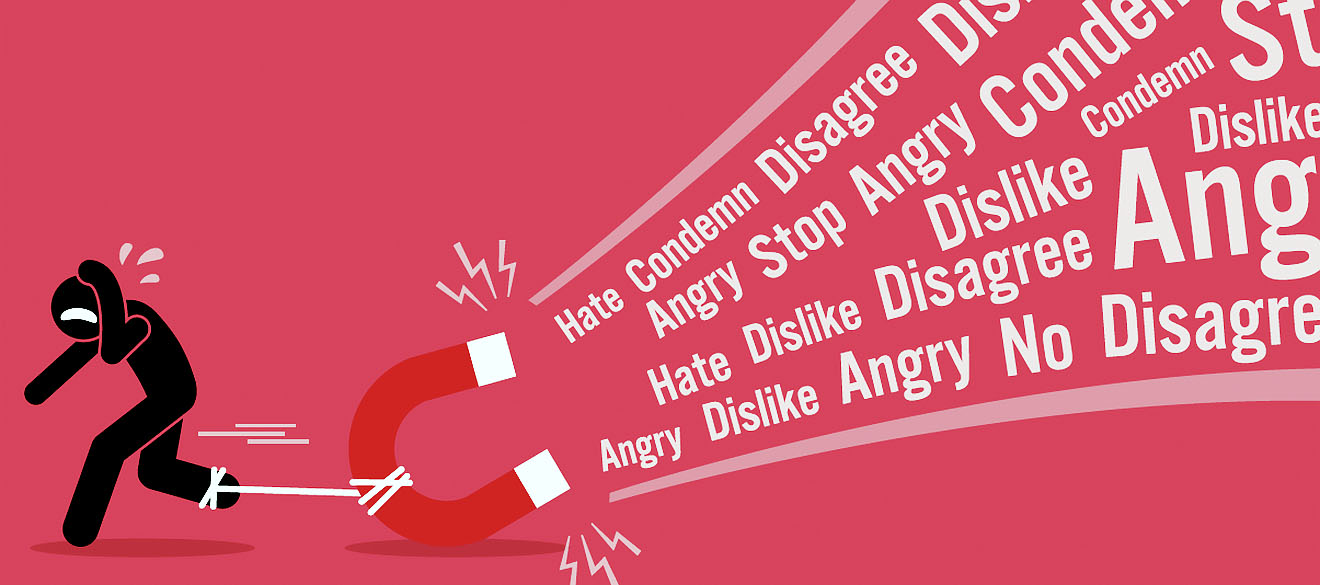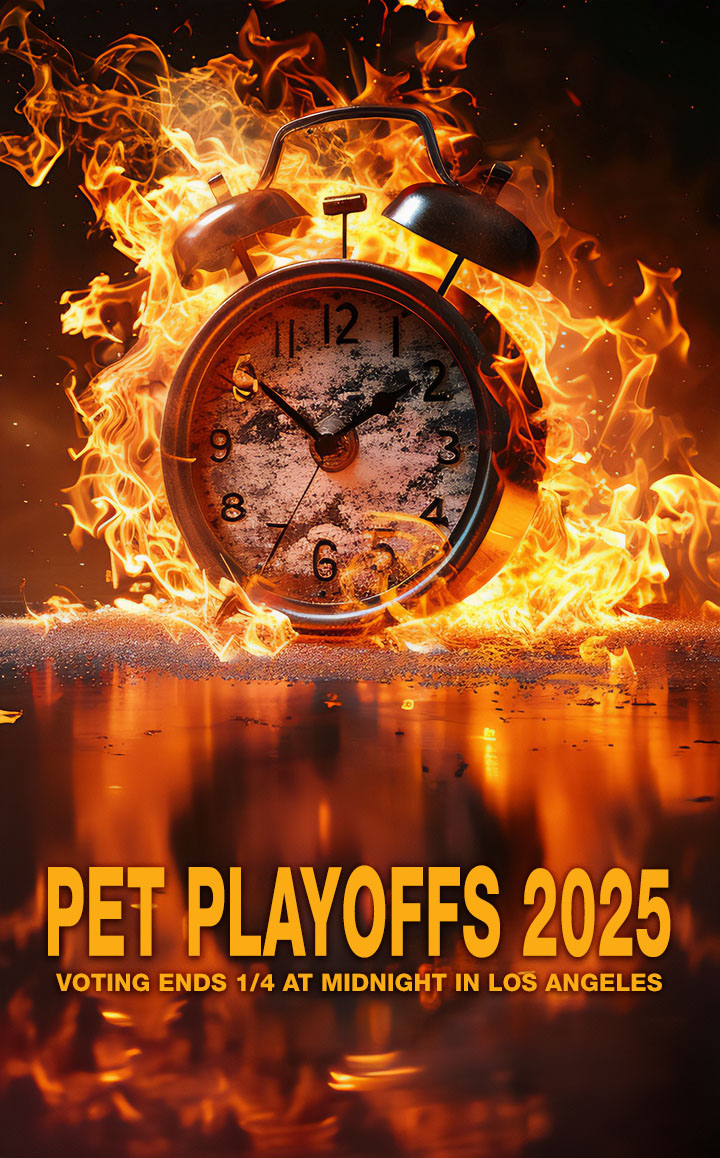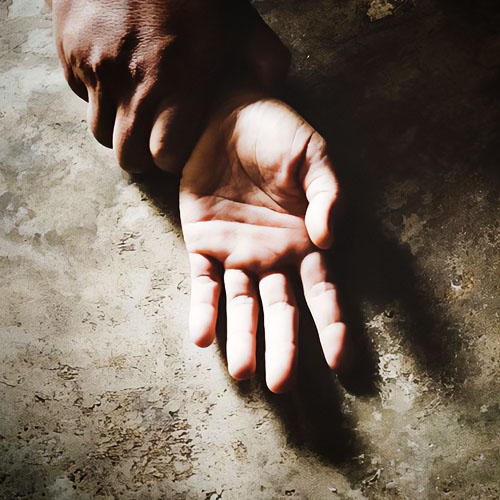How Today's Culture War Differs from Previous Pitchfork Mobs
I recently picked up a paperback by a New York Times journalist in a bookshop and read the following on the back cover: “A major metropolitan newspaper announces that half of its new employees will have to be women and the other half members of minority groups. At a Milwaukee school district, ‘inappropriate staring’ has been labeled a form of sexual harassment, punishable by dismissal. And a proposed new American history syllabus features such topics as ‘Why I Am Not Thankful for Thanksgiving,’ ‘Once Upon A Genocide,’ and ‘George Washington: Speculator in Native Lands.’” It went on to describe these incidents as representative of a new, puritanical, left-wing movement that’s sweeping contemporary America. The author—Richard Bernstein—has labeled this crusade “the Inquisition.”
Oh no, I thought. That’s exactly the book I want to write. For the last nine months, I’ve been collecting stories like these, from the two white women who were forced to shut down their business selling burritos out of a food truck in Portland after they were accused of “cultural appropriation,” to the editor of a prestigious New York magazine who was fired for publishing an article by a Canadian radio host, a man charged with sexual assault and then acquitted on all counts.
I even have a title: Salem 2.0.
But there was a journalist who got there before me. Damn him.
Then I took a closer look. The book, called Dictatorship of Virtue, had been published in 1995. It was 23 years old. I was relieved, obviously, but also a bit puzzled: Had the liberal left really been this batshit-crazy for decades? Were the “Social Justice Warriors” who had appeared since the election of Donald Trump—“the Resistance”—just the latest troops in a culture war dating back to the Reagan era? Was the Great Awakening (another title I’ve been thinking about) just a cyclical recurrence of political correctness? Would I have to call my book Salem 3.0 instead? That didn’t have quite the same ring to it.
I returned to my writer’s desk feeling a bit disheartened, but after some reflection, I began to perk up. There’s no question that the current moment in American culture—and across the Anglosphere more generally—is firmly embedded in an anti-Western, anti-bourgeois ideology that stretches back decades. But it’s also true that something’s happened in the past few years to turbocharge this movement and it’s gathered such momentum we seem to be on the verge of a tipping point.
Put it another way: It’s as if the discontent that had been rumbling away among left-wing intellectuals for years has suddenly exploded into a cacophonous rage. A regressive political philosophy fueled by guilt, self-loathing, and resentment that used to be confined to Ivy League universities, Hollywood liberals and the fringes of the Democratic Party has gone viral and infected millions of people in the U.S., Britain, Canada, Australia, and New Zealand.
If you’re a white heterosexual male, look out.
The mob already came for me, incidentally. At the beginning of the year, I was appointed to the board of a regulatory body in the U.K., and as soon as it was announced an army of hashtag activists started trawling through my social media history to find evidence that I wasn’t a fit person to serve as a member of this august public institution.
No one had ever heard of it before I was appointed, my role was incredibly minor, and there was no salary attached, but the fact that I’d been appointed by a conservative prime minister meant there was an opportunity to score some political points. It didn’t take the online metal-detectorists long to strike gold.
Ten years ago, I was a judge on a food reality-show with the Indian supermodel Padma Lakshmi, and I’d composed a handful of tweets late at night salivating over her boobs. There were some other, equally sophomoric comments about the breasts of other celebrities. Not exactly Harvey Weinstein territory, but it didn’t stop me being targeted by #MeToo activists. An outraged mob sprung up on Twitter, baying for my blood. According to them, I embodied everything that was wrong with the British establishment: male, pale, and stale. A message was relayed from the prime minister’s office that it might be in everyone’s best interests if I stood down. I duly obliged and, shortly afterward, I was stripped of my honorary fellowship from the University of Buckingham, kicked off the boards of two charities, and had to resign from my full-time job.
That’s what gave me the idea for the book, obviously, but the fact that I was skewered by a twitchfork mob doesn’t mean I’m wrong. This latest manifestation of political activism is different from earlier versions by an order of magnitude.
For one thing, there’s the sheer, muddle-headed, Bizarro World nuttiness of it. We’re told that “hate speech” is a great evil, unless you’re advocating the hatred of men (a recent column in the Washington Post was headlined “Why can’t we hate men?”), which is absolutely fine. According to a recent poll of “woke” academics and policy experts, the United States is the tenth most dangerous country in the world for women—far more dangerous than Iran, even though Iranian women caught not wearing the full hijab by the religious police are routinely sentenced to 74 lashes. All men are “privileged”—we’re just supposed to accept that without question—in spite of the fact that 75 percent of the suicides reported in the U.K. in 2016 were men, 79 percent of homicide victims across the world are men, 93 percent of prison inmates in the U.S. are men, 94 percent of Americans killed in industrial accidents are men, and 99.9 percent of soldiers killed in combat are men.
And, of course, all white people are “privileged” as well, including the victims of the opioid epidemic, known as “the White Death” because the majority of the 72,000 people estimated to have died from drug overdoses in 2017 were white, and in spite of the fact that poor white boys do worse in school than any other ethnic group, there are fewer white births than deaths in a majority of U.S. states, American black women have higher college attendance rates than white men, and college-educated black women have higher incomes than college-educated white women. For the Social Justice Warrior on the left, it’s as if reality itself is a social construct, not just race and gender.
Then there’s the insidious way in which Maoist intolerance of those who dissent from progressive orthodoxy has embedded itself in company policies, bureaucratic procedures, and legal systems. I’m not just talking about the punishment meted out to James Damore, the Google employee who dared to question the company’s diversity and inclusion policy. He was fired for creating a “hostile work environment”—a decision that was rubber-stamped by the National Labor Relations Board. (So much for the First Amendment.)
I’m also thinking of the change to the Canadian Human Rights Act and Criminal Code which makes it a misdemeanor, punishable by law, if you refuse to use a trans person’s preferred gender pronoun. Jordan Peterson warned us about that last year and, of course, was immediately accused of “helping to foster a climate for hate to thrive” by trans activists, left-wing academics, and labor unions.
Twenty-five years ago, we had the “Antioch Rules,” which made it an offense at Antioch College for a man to engage in a sexual encounter without receiving “affirmative consent” at every stage of the seduction process. But that was regarded by most people at the time as an example of political correctness gone mad and parodied on Saturday Night Live. Today, following President Obama’s supercharging of Title IX, the “Antioch Rules” apply in virtually every American university, and hundreds of young men have been branded “rapists” by kangaroo courts and kicked out of college for failing to observe this absurd protocol. One poor guy was found guilty of “rape” because he couldn’t remember whether he’d asked for permission to remove his girlfriend’s belt, even though they’d dated for over a year after that initial encounter.
In Britain, there’s been a massive uptick in “hate crimes”—a new category of criminal offense created in 2007, not by an Act of Parliament, but by a group of unelected officials. If you say or write something that another person is offended by, and that person thinks you’re motivated by hostility or prejudice toward them based on a personal characteristic, you’re guilty of a “hate crime.” Doesn’t matter whether that is, in fact, your motive, all that counts is that the offended person perceives it to be.
At present, there are five “protected characteristics”—disability, race, religion, sexual orientation, and transgender identity—but the British government is thinking of adding “gender” to the list and outlawing “misogyny.” Given that some feminists think climate change is caused by “misogyny,” God knows who will end up in the dock. The executive board of British Petroleum? Earlier this year, a comedy writer called Graham Linehan was given a “verbal harassment warning” by the West Yorkshire Police for “deadnaming” trans activists on Twitter—i.e., using her original male name, rather than her new chosen name.
I could go on. Scarcely a day passes without a “cishet” white male being “called out” on Twitter for some thought crime or other. A twitchfork mob immediately forms up and within days, sometimes hours, the guy is tossed to the wolves. Recent examples include Kevin Williamson, who was hired then fired by The Atlantic after some intemperate remarks about abortion were dug up; Alessandro Strumia, a theoretical physicist at CERN who was immediately suspended and placed under “investigation” after he challenged the feminist dogma about why more women don’t do physics; and Stephen Galloway, a creative writing professor who lost his job at the University of British Columbia after he was falsely accused of rape by a disgruntled ex-girlfriend.
Still don’t believe me? A Harvard University survey conducted two years ago found that 51 percent of Americans between the ages of 18 and 29 do not support capitalism, compared to 42 percent who said they support it. That’s up four percentage points from a 2011 Pew survey where already 47 percent of the same age-group held a negative view of capitalism.
So what accounts for this explosion in ultra-liberal attitudes? How did political correctness metastasize?
One possibility, not to be lightly dismissed, is that the world has become a much more unfair place in the past few years. Of course people are protesting more—there’s more to protest about. But is that true?
The answer is no. Take racism, for instance. By almost every measure, racism is declining in the United States. In 1967, when miscegenation laws were repealed, three percent of all newlyweds were married to someone of a different race. In 2015, that number had risen to 17 percent. Next time some placard-carrying millennial tells you that all white Americans are racist, point out that more than one in ten white newlyweds has married a person of a different race.
Economically, African-American men have never been doing better. According to a recent report by the American Enterprise Institute, 57 percent of black Americans now belong to the upper or middle class, compared to just 38 percent in 1960. The share of black men in poverty, by contrast, has fallen from 41 percent in 1960 to 18 percent today. It’s the same story for Hispanic-Americans—55 percent belong to the upper or middle class—and Asian-Americans (73 percent). Police shootings? According to the Harvard economist Roland Fryer, blacks are no more likely to be shot by police officers than whites.
When comparing different countries, one way of measuring the level of racism is to ask whether people in that country would object if a person of another race moved in next-door. By that metric, the U.S., Britain, Canada, Australia, and New Zealand are among the least racist countries in the world. Less than five percent of Britons said they would object, compared to more than 40 percent of Indians and Jordanians.
What about homophobia? Again, all the survey data suggests attitudes toward homosexuals across the Anglosphere have never been more liberal. For instance, just 35 percent of Americans were in favor of gay marriage in 2001. By 2017, that number had grown to 62 percent. Ditto for the U.K., where the number approving same-sex marriage has climbed from 17 percent in 1983 to 64 percent by 2016.
Gender? Contrary to the views of gender studies professors, the fairer sex has never had it so good. In the U.S., women comprise over 56 percent of students in college, while in the U.K., 40,000 more women than men enrolled at universities this fall.
As for the so-called “rape epidemic” on American college campuses, it’s a myth. Sexual assaults of female college students in the U.S. dropped by more than half between 1997 and 2013, and in the same period, young women in college were less likely to be assaulted than those who weren’t in college.
The gender pay gap? Once you control for the fact that women are more interested in lower-paying jobs than men (only nine percent of nurses are male), are more likely to take time out to start a family, and have a higher preference for part-time work, the gap disappears. Gender studies professors will tell you different, of course, but a recent survey found that they are paid, on average, $15,000 a year more than male professors in STEM subjects.
Okay, you might say. Maybe those lucky enough to live in the West are doing all right. But what about the less fortunate? No one would question that capitalism is wreaking a terrible toll on the developing world, would they? Well, yes, they would. Since 1990, more than a billion people across the planet have been lifted out of extreme poverty—113 million of them in a single year (2013)—thanks to the free enterprise system. The people millennials should be feeling sorry for are the citizens of the people’s republic of Venezuela. When Hugo Chavez came to power in 1998, 40 percent of Venezuelan households were living in poverty. Last year, that figure had climbed to 82 percent.
When you look at the data, there is less for liberals to protest about than there has been at any point in the past 50 years. So why have they gone crazy? What gives?
According to Greg Lukianoff and Jonathan Haidt (a First Amendment lawyer and social psychologist, respectively), who’ve made a study of the anti-free speech culture on American campuses, the reason for this sea change is because today’s students and recent college graduates have been raised by overprotective, liberal parents and spend too much time on the internet. These digital natives believe the world is divided between good people and evil people, are impervious to reason once they’ve made up their mind about someone, and think the best way to deal with that person is to push them out of the body politic as if they are a pollutant or a pathogen. Not literally, but metaphorically, by “no-platforming” them, heckling them, ordering them to “check their privilege,” and, if necessary, “calling them out” on social media, i.e., publicly shaming them.
In their new book The Coddling of the American Mind, Lukianoff and Haidt note that millennials couch their objections to these “bad people” in psychological rather than ideological terms. Thus, the reason they don’t want conservatives like Ben Shapiro and Ann Coulter appearing on campus is not that they disagree with their political views, but because they “trigger” them or make them feel “unsafe.” Most people would take these claims with a pinch of salt, suspecting that students are weaponizing their mental health in order to push their liberal agenda. But Lukianoff and Haidt take them seriously. They believe there is something actually wrong with young Americans: They are far more psychologically fragile than they should be, thanks to the bubbles and echo chambers they’ve spent their lives in, and cannot cope with conflict or challenge. The solution, then, is to get them to toughen up—or, at least, persuade them that engaging with someone holding different views won’t cause them lasting psychological harm.
One problem with this analysis is that it fails to account for why these authoritarian Young Turks skew left rather than right. After all, if their main concern is to avoid the anxiety they believe arises out of viewpoint diversity, wouldn’t any political creed serve as well as any other provided everyone signs up to it? Why have they embraced the teachings of Karl Marx and Michel Foucault rather than Edmund Burke and Friedrich Hayek? Lukianoff and Haidt have an answer to this. It’s because their professors are overwhelmingly left-wing.
The expert on political bias in the American academy is the political scientist Stanley Rothman. According to him, the proportion of U.S. professors describing themselves as right-wing declined from 34 percent in 1984 to 15 percent in 1999, and those describing themselves as left-wing increased from 39 percent to 72 percent in the same period. And the shift has continued—accelerated, even—in the last two decades. According to a study carried out by Econ Journal Watch in 2016, which looked at the voter registration of faculty members at 40 leading American universities in the fields of economics, history, law, psychology, and journalism/communications, Democrats outnumber Republicans by 11.5 to one on average. In psychology, the ratio is 17.4 to one; in history, it’s 33.5 to one. A more recent study of 51 of the top-ranked 66 liberal arts colleges by Mitchell Langbert, carried out in 2018, found that 39 percent of them had no Republican staff on their faculties at all.
“The political registration in most of the remaining 61 percent, with a few important exceptions, is slightly more than zero percent but nevertheless absurdly skewed against Republican affiliation and in favor of Democratic affiliation,” writes Langbert. “Thus, 78.2 percent of the academic departments in my sample have either zero Republicans, or so few as to make no difference.”
Whether Lukianoff and Haidt are correct in their core analysis, this extraordinary political imbalance in American universities must have played a part in radicalizing the generation that has come of age in the new millennium. And the same pattern emerges in other parts of the Anglosphere. In the U.K., for instance, those academics saying they would vote for right-of-center parties declined from 35 percent in 1964 to 11 percent in 2011, and those saying they’d vote for left-of-center parties increased from 64 percent in 1964 to 77 percent in 2015.
Other factors are surely at play, too. One thing that used to act as a firebreak on the spread of radical, socialist ideas was the distinction between the regressive left and the progressive left. Moderate liberals have generally treated hard-left political activists with caution, knowing that in the twentieth century, communist regimes were responsible for something like 100 million unnecessary deaths. But the line between the progressive and regressive left has always been quite fuzzy, and it’s become blurrier still since the election of Donald Trump in 2016. That event—and to a lesser extent the electoral success of right-wing populist movements across Europe, including Brexit—has polarized party politics and enabled the regressive left to capture large swathes of the moderate left.
In addition, the melding of hard-left dogma with postmodernism—what Jordan Peterson calls “postmodern Neo-Marxism”—has helped with its rapid spread in the last few years, even though that phenomenon dates back to the 1960s. It’s almost as if a group of cultural terrorists had been perfecting a virus in a lab for 50 years and then waited for just the right moment to release it.
Many progressive liberals have ended up feeling like apostates just because they have remained true to their original values, while all around them friends and allies have shifted leftwards. Some of them—such as the former Evergreen State College professor Bret Weinstein, who was hounded off campus by baseball-bat wielding thugs—have ended up as leading lights of what’s been called the Intellectual Dark Web.
Another theory, this one propounded by the African-American intellectual John McWhorter, is that the phenomenon of “wokeness” is a new, secular religion, and one reason it has grown so fast is that traditional, organized religions have experienced a steep decline in recent years. That would explain why Social Justice Warriors expect you to take so much of what they say on faith and why they treat those who challenge them as apostates—evildoers, motivated by venal self-interest—rather than worthy intellectual opponents.
It also fits with their fondness for reciting bits of dogma as if they were liturgical incantations, like the protestors at Middlebury College who responded to a speech by the conservative political scientist Charles Murray by chanting the following catechism in unison: “Science has always been used to legitimize racism, sexism, classism, transphobia, ableism, and homophobia, all veiled as rational and fact, and supported by the government and state. In this world today, there is little that is true ‘fact’.” Finally, it explains why straight white males who want to be accepted into the church of political correctness have to confess to being racist—the woke version of original sin.
So what can you do, particularly if a mob is gathering outside your home chanting “Time’s up”? (I literally had a pack of jackals on my doorstep, although, to be fair, they were all journalists.) A ray of hope was provided by a recent report for an organization called More in Common which divided Americans into seven camps: Devoted Conservatives, Traditional Conservatives, Moderates, Politically Disengaged, Passive Liberals, Traditional Liberals, and Progressive Activists. According to the report, only people in the last category are members of Team Woke. They may shout the loudest, and, in doing so, persuade the rest of us that they’re far more numerous than they are, but in fact, they only constitute eight percent of American adults. By contrast, 80 percent of people polled by the report’s authors agreed with the statement “political correctness is a problem in our country.” Social Justice Warriors, it turns out, are in a tiny minority.
The answer, then, is for the “frustrated majority”—that’s how we’re referred to in this report—to stop kowtowing to these self-appointed commissars of the public square and start standing up to them. The reason they have such unprecedented power at this moment in our culture and can cast into the outer darkness anyone who dissents from their sacred beliefs is because we’ve allowed them to have it. To quote the phrase that empowered the British people to vote to leave the European Union, it’s time to “take back control.”
Okay, where’s my typewriter? Time to get going on Salem 2.0.





















